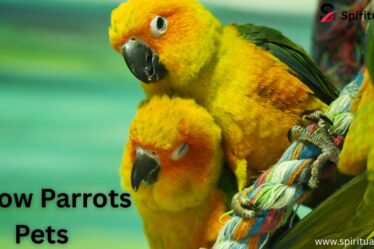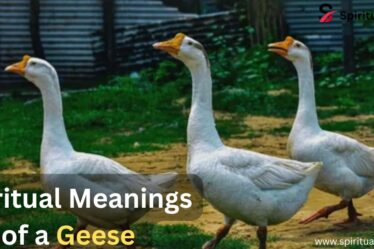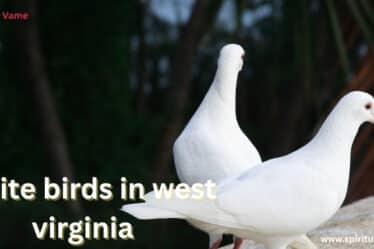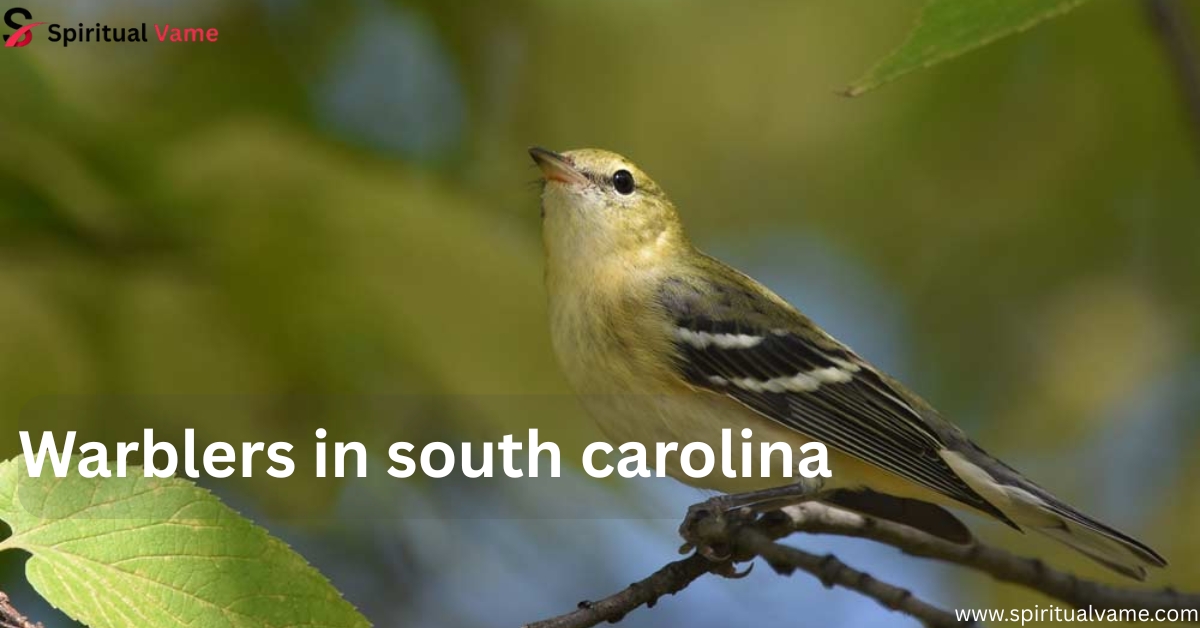
South Carolina is a great place to see many colorful birds, especially warblers. These small songbirds come here during spring and fall migration. You can find them in forests, wetlands, and near rivers. Birdwatchers love spotting warblers in South Carolina because of their bright colors and sweet songs.
There are many types of warblers in South Carolina, like the Yellow-Rumped Warbler and American Redstart. Some stay for the summer, while others just pass through. Watching warblers in South Carolina is fun and peaceful. If you enjoy nature and birds, this is a perfect hobby. Grab your binoculars and explore the world of warblers in South Carolina today!
What Are Warblers?
Warblers are small, insectivorous songbirds that belong to several genera, especially Setophaga. They have bright and varied plumage that changes by species, sex, and season. For example, the Yellow-Rumped Warbler (Setophaga coronata coronata) is known for its distinctive yellow patches, while the American Yellow Warbler (Setophaga petechia) shows a bright yellow color all over. These birds live mainly in the canopy and understory of forests, wetlands, and shrubby areas. They are very active and use quick movements to find insects on leaves and bark. Their song and calls are important for communication, especially during the breeding season when males sing to attract mates and defend territory. The diversity of warblers in South Carolina is impressive, with many species migrating through the state during spring and fall. Understanding their taxonomy, such as different species and subspecies, helps birdwatchers identify them correctly.
Warblers In South Carolina
South Carolina hosts many warblers, but here are fourteen important species you can expect to see. The American Redstart (Setophaga ruticilla) is famous for its striking black and orange plumage. The Pine Warbler (Setophaga pinus) prefers pine forests and is one of the few warblers that can be seen year-round. The Prothonotary Warbler (Protonotaria citrea) is a bright golden-yellow bird often found near swamps and slow-moving water. The Black-and-white Warbler (Mniotilta varia) is easy to spot because it creeps along tree trunks like a nuthatch. The Yellow Warbler (Setophaga petechia) is widely distributed with its bright yellow color and reddish streaks on the chest.
The Common Yellowthroat (Geothlypis trichas) wears a distinctive black mask and prefers dense underbrush. The Northern Parula (Setophaga americana) has blue-gray upper parts and a colorful yellow throat. The Magnolia Warbler (Setophaga magnolia) is known for its bold black streaks on a yellow belly. The Yellow-rumped Warbler (Setophaga coronata) has yellow patches on the sides and rump and can be found in mixed forests. The Black-throated Blue Warbler (Setophaga caerulescens) shows a deep blue color and a black throat in males.
The Palm Warbler (Setophaga palmarum) often flicks its tail and has a rusty crown. The Ovenbird (Seiurus aurocapilla) is unique among warblers because it walks on the forest floor and has a loud, ringing song. The Hooded Warbler (Setophaga citrina) has a bright yellow face with a black hood. Finally, the Cape May Warbler (Setophaga tigrina) has a striped pattern and a unique nasal song. These fourteen species represent a variety of warblers found in South Carolina’s Congaree National Park, Francis Beidler Forest, and other important habitats.
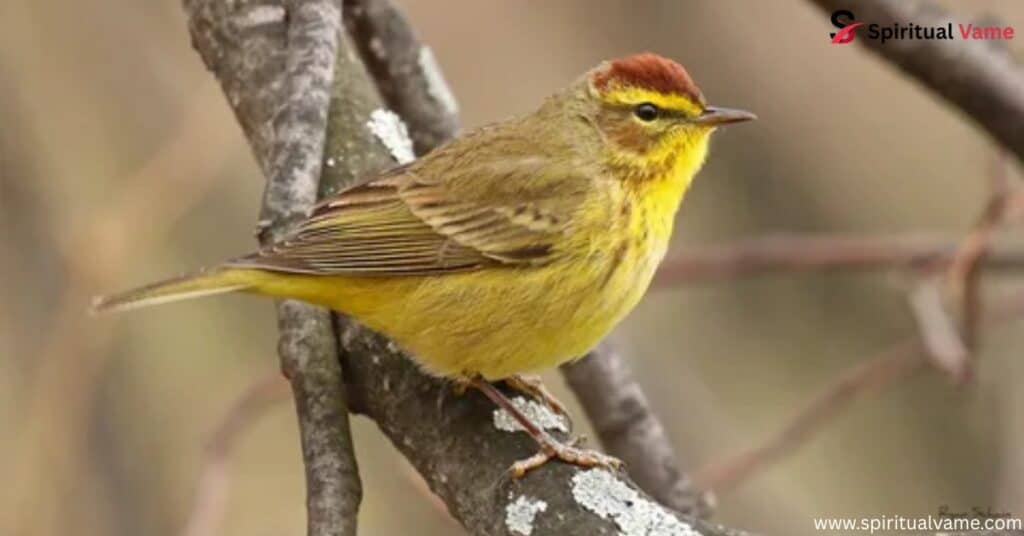
Myrtle Warbler
The Myrtle Warbler, also known as Audubon’s Warbler in some regions, is a striking subspecies of the Yellow-rumped Warbler complex. It is recognized by its gray body, yellow patches on the rump, crown, and sides, and bold white wing bars. This warbler is commonly seen in South Carolina during migration and winter. It prefers open woodlands, forest edges, and areas with scattered pines. The Myrtle Warbler is an insectivorous bird but also eats berries when insects are scarce, especially in winter. Its song is a sharp, musical trill, making it easier to identify even when hidden in dense foliage.
Wilson’s Warbler
The Wilson’s Warbler is a small, lively warbler with a bright yellow body and a tiny black cap on its head. It is one of the earliest warblers to migrate through South Carolina in the spring. This species favors shrubby areas and thickets, often foraging in the understory. The Wilson’s Warbler is known for its rapid, high-pitched song and active behavior, hopping through branches in search of insects. It breeds farther north but is commonly seen in South Carolina during migration.
American Yellow Warbler
The American Yellow Warbler (Setophaga petechia) is one of the most easily recognizable warblers in South Carolina. With its bright yellow body and reddish streaks on the chest, it stands out in the summer woodlands and marsh edges. This species prefers open areas with shrubs and small trees near water. It is a migratory species that arrives in South Carolina during the breeding season, building cup-shaped nests in thick vegetation. Its sweet, musical song fills the air in spring and early summer.
American Redstart
The American Redstart (Setophaga ruticilla) is a boldly marked warbler, especially the males, with bright orange patches contrasting against black plumage. This species is often found flitting actively through the forest canopy and edges, flashing its colorful tail and wing patches while catching insects in mid-air. It breeds in South Carolina’s deciduous forests during the warmer months and migrates south in the winter. Its distinctive, sharp song is a useful clue for birdwatchers.
Orange-Crowned Warbler
The Orange-Crowned Warbler is a more subdued but interesting warbler found in South Carolina during migration. It has an olive-green body with a faint orange crown patch that is not always visible. This bird prefers brushy habitats, forest edges, and thickets where it forages for insects. Its song is a soft, trilling series of notes that can be challenging to hear. This warbler’s subtle colors help it blend into its habitat well.
Nashville Warbler
The Nashville Warbler is a small, grayish-green warbler with a bright yellow throat and chest and a white eye ring. It migrates through South Carolina in spring and fall and prefers open woods and forest edges. The bird’s rapid, descending song is often heard before it is seen. It feeds mainly on insects and spiders, gleaning them from leaves and branches in the canopy.
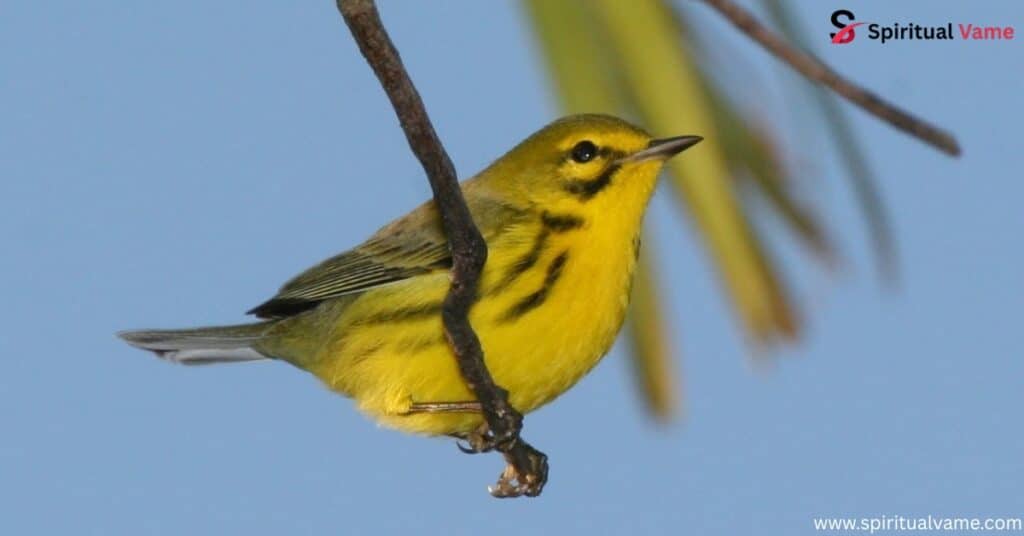
Common Yellowthroat
The Common Yellowthroat (Geothlypis trichas) is a familiar warbler with a bright yellow throat and chest and a distinctive black mask on the males. It favors dense, shrubby wetlands and marshy areas in South Carolina. This bird’s call is a loud “witchety-witchety” sound, very noticeable in spring and summer. It forages actively in low vegetation, catching insects and spiders.
Black-and-White Warbler
The Black-and-White Warbler (Mniotilta varia) is easily identifiable by its striking black and white striped plumage. Unlike most warblers, it creeps along tree trunks and branches, searching for insects under bark. It breeds in South Carolina’s mature forests and migrates through the state. Its song is a loud, accelerating trill that helps locate it in dense forests.
Northern Waterthrush
The Northern Waterthrush is a larger warbler that prefers wet habitats such as swamps and stream edges. It has brown-streaked plumage and a loud, ringing song. It often walks on the ground near water, feeding on insects and small invertebrates. South Carolina offers good habitat for this species, especially in bottomland forests and wetlands.
Ovenbird
The Ovenbird (Seiurus aurocapilla) is unique among warblers because it spends much of its time on the forest floor. It has olive-brown upper parts and bright orange on its crown. Its name comes from its nest, which looks like a small oven. The Ovenbird has a loud, two-part song that echoes through South Carolina’s deciduous forests during breeding season. This species is a joy to watch as it walks and runs on the ground searching for insects.
Tennessee Warbler
The Tennessee Warbler is a small, gray-green bird with a white belly and a yellowish wash on the chest. It migrates through South Carolina in spring and fall, stopping in forests and woodlands. Its fast, high-pitched song is distinctive, and it feeds on insects and nectar, often visiting flowering trees and shrubs.
Northern Parula
The Northern Parula (Setophaga americana) is a small warbler with a bluish-gray back, yellow throat and chest, and white eye arcs. It is commonly found in South Carolina’s forests and swamps, often near moss-covered trees. Its song is a buzzy trill, heard during the breeding season. This warbler gleans insects from leaves and bark in the mid-canopy.
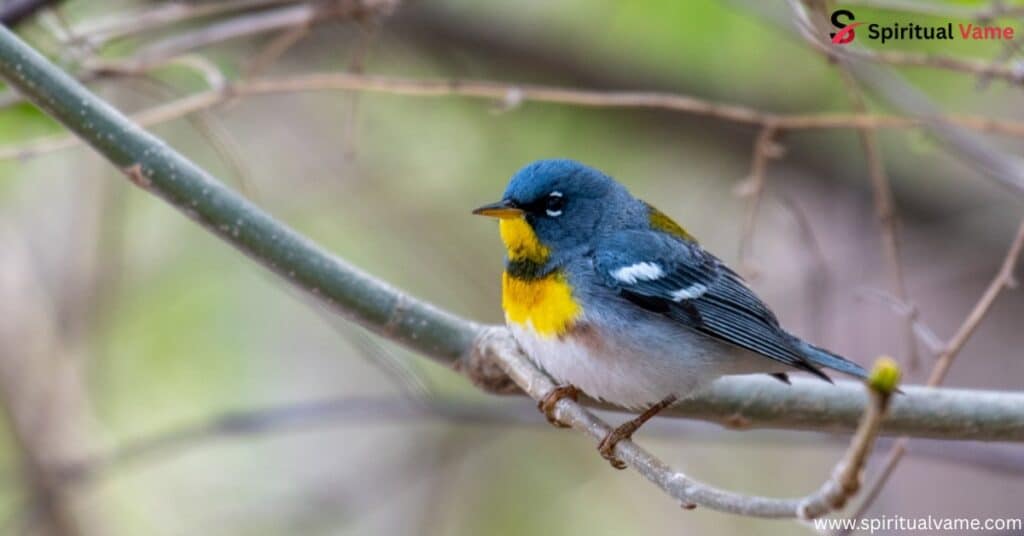
Magnolia Warbler
The Magnolia Warbler (Setophaga magnolia) has a bright yellow chest with bold black streaks and a dark mask on its face. It breeds in northern forests but migrates through South Carolina during spring and fall. It prefers dense shrubs and young forests, where it feeds on insects. Its song is a rapid, musical trill that birdwatchers recognize easily.
Bay-Breasted Warbler
The Bay-Breasted Warbler is a colorful bird with a chestnut-colored breast and dark streaks on a white belly. It migrates through South Carolina during spring and fall. This warbler favors coniferous forests and is an insectivore, feeding mostly on spruce budworms in its breeding range.
Blackburnian Warbler
The Blackburnian Warbler is one of the most striking warblers in South Carolina with bright orange throat and face patches contrasted with black and white. It breeds in northern forests but passes through South Carolina during migration. It prefers mature forests and feeds high in the canopy.
Chestnut-Sided Warbler
The Chestnut-Sided Warbler has bright yellow on the crown and sides with chestnut streaks along its flanks. It migrates through South Carolina and prefers shrubby habitats and young forests. Its song is a sweet series of whistles.
Blackpoll Warbler
The Blackpoll Warbler is a small but remarkable migratory warbler that passes through South Carolina on its way to South America. It has black and white streaks and a distinctive call. It is often seen in dense forests and is known for its long-distance migration.
Black-Throated Blue Warbler
The Black-Throated Blue Warbler (Setophaga caerulescens) is a beautiful bird with deep blue upper parts and a black throat in males. It is found in South Carolina during migration and breeding season. It prefers mixed and deciduous forests, foraging in the canopy.
Cerulean Warbler
The Cerulean Warbler is a rare but stunning bird with bright sky-blue plumage. It nests in mature forests in South Carolina and is considered a species of conservation concern due to habitat loss.
Worm-eating Warbler
The Worm-eating Warbler is named for its feeding behavior on caterpillars and worms found in leaf litter. It has brown streaks and a striped head. It prefers forest floors and dense understory in South Carolina.
Louisiana Waterthrush
The Louisiana Waterthrush is a large warbler associated with fast-moving streams and rivers. It has bold white stripes on its face and brown-streaked body. It feeds on aquatic insects and is often
Blue-Winged Warbler
The Blue-Winged Warbler is a bright yellow warbler with blue-gray wings and a small black eye line. It favors shrubby fields, forest edges, and young forests in South Carolina, especially during migration and breeding. Its cheerful buzzy song is easy to recognize. This warbler often hybridizes with the Golden-Winged Warbler in overlapping ranges.
Golden-Winged Warbler
The Golden-Winged Warbler is a striking bird with yellow patches on its wings and crown, contrasted by black and white plumage. It prefers early successional habitats like shrubby fields and young forests. This species is declining due to habitat loss and competition with the Blue-Winged Warbler, making conservation efforts important in South Carolina.
Brewster’s Warbler
Brewster’s Warbler is a rare hybrid between the Blue-Winged and Golden-Winged Warblers. It combines features of both species, showing a mix of yellow wing patches and blue-gray tones. These hybrids can sometimes be spotted in areas where the parent species overlap in South Carolina.
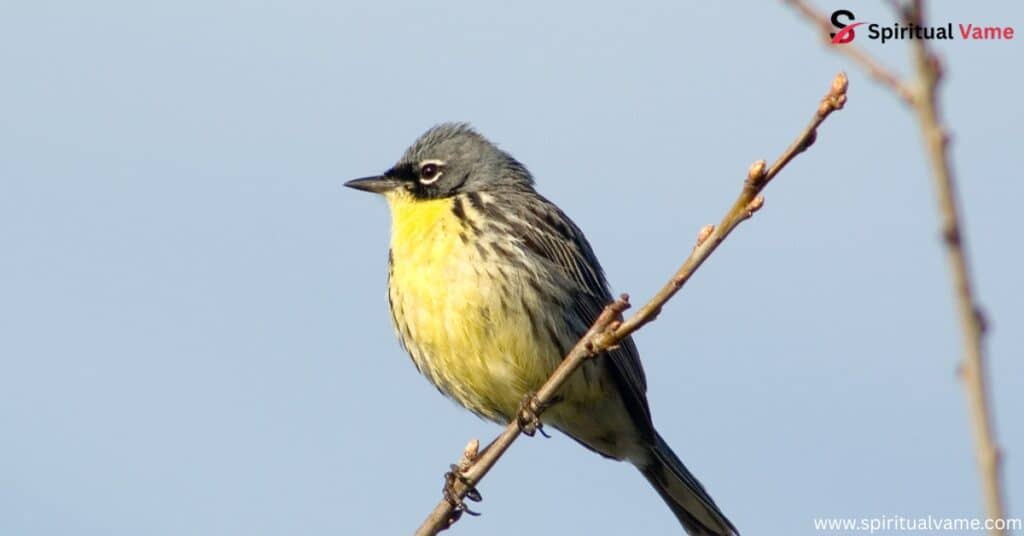
Lawrence’s Warbler
Similar to Brewster’s Warbler, Lawrence’s Warbler is another hybrid between Blue-Winged and Golden-Winged Warblers but with reversed color patterns. It is very rare and primarily of interest to experienced birdwatchers and researchers studying warbler genetics.
Prothonotary Warbler
The Prothonotary Warbler (Protonotaria citrea) is a bright, golden-yellow warbler that prefers swampy forests and bottomland areas in South Carolina. It nests in tree cavities near water and is one of the few warblers that use such nesting sites. Its clear, ringing song and stunning coloration make it a favorite among birders. Conservation efforts in places like Francis Beidler Forest have helped protect this species’ important habitat.
Kentucky Warbler
The Kentucky Warbler is a ground-loving warbler with olive-green upper parts, a yellow belly, and a distinctive black mask. It prefers dense forests with thick undergrowth, often staying low to the ground. It is more secretive than many other warblers but can be heard singing its loud, ringing song in South Carolina’s summer forests.
Hooded Warbler
The Hooded Warbler (Setophaga citrina) stands out with its bright yellow face and throat surrounded by a black hood and bib. It breeds in South Carolina’s deciduous forests, especially near streams and shaded areas. The male’s clear, whistled song is one of the most recognizable warbler songs in the region.
Cape May Warbler
The Cape May Warbler (Setophaga tigrina) is a striking warbler with a streaked yellow body, chestnut crown, and black throat patch in males. It migrates through South Carolina during spring and fall. This warbler often feeds on spruce budworms during breeding but switches to nectar and insects while migrating.
Palm Warbler
The Palm Warbler (Setophaga palmarum) is a small warbler with a distinctive habit of constantly wagging its tail. It shows rusty crown feathers and a brownish tail. This species frequents open woodlands and forest edges during migration through South Carolina. Its buzzy song is repeated rapidly and is useful for identification.
Pine Warbler
The Pine Warbler (Setophaga pinus) is one of the few warblers that often stays in South Carolina year-round, especially in pine forests. It has olive-green upper parts and a bright yellow chest. This warbler is more seed-eating than most others and often visits feeders. Its sweet, musical song can be heard throughout the pine forests.
Yellow-Throated Warbler
The Yellow-Throated Warbler has striking black and white plumage with a bright yellow throat and chest. It is usually found in pine forests and along river edges in South Carolina. This warbler is a skilled hunter, gleaning insects from tree branches and bark. Its loud, clear song echoes through its preferred habitats.
Prairie Warbler
The Prairie Warbler is a small bird with a yellow face, chest, and belly, marked with black streaks. It prefers scrubby habitats and open woodlands, making South Carolina a good place to spot it during breeding and migration. Its rising, buzzy song is distinctive and carries well in open habitats.
Canada Warbler
The Canada Warbler (Cardellina pusilla) is a shy, elusive warbler with a gray back, bright yellow chest, and a necklace of black streaks. It migrates through South Carolina during spring and fall, usually in dense, moist forests. Its soft, musical song is rarely heard except by attentive birders.
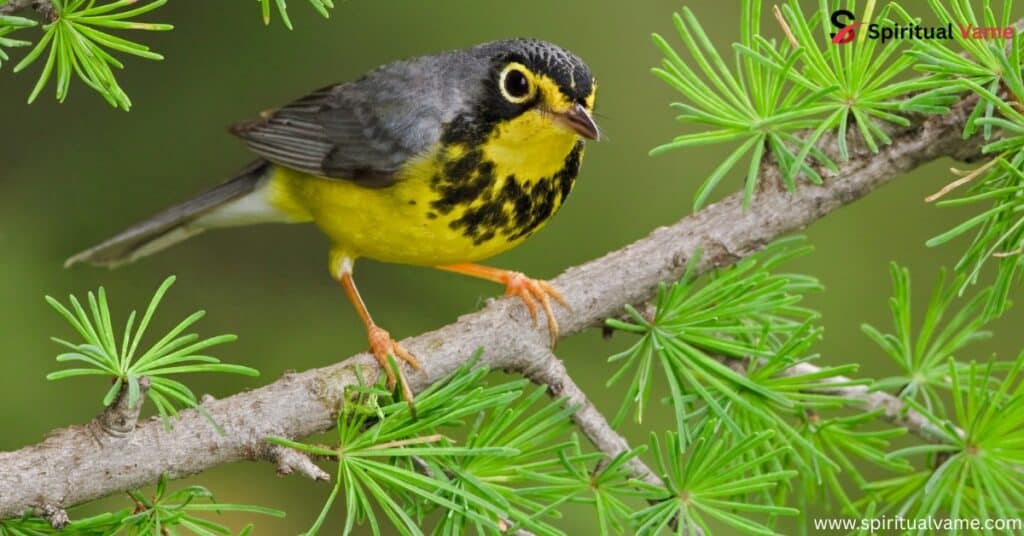
Black-Throated Green Warbler
The Black-Throated Green Warbler is a striking species with olive-green upper parts, a yellow face, and a black throat. It breeds in northern forests but migrates through South Carolina’s mixed forests. This warbler feeds mainly in the mid-canopy and has a distinctive buzzy song.
Connecticut Warbler
The Connecticut Warbler is a rare visitor to South Carolina, usually seen during migration. It has gray upper parts, a white eye ring, and a yellow throat and chest. It prefers dense forests and is secretive, often staying low in thick undergrowth. Its clear, musical song can sometimes be heard during migration.
Swainson’s Warbler
The Swainson’s Warbler is a secretive species of southern swamps and bottomland forests in South Carolina. It has brown upper parts, a pale belly, and a distinctive long tail. This warbler is more often heard than seen, with a loud, whistled song that carries through dense understory. It prefers moist, shaded habitats with thick leaf litter.
Conclusion
In conclusion, warblers in South Carolina showcase an incredible variety of colors, songs, and behaviors that make birdwatching in this region truly special. Species like the American Yellow Warbler (Setophaga petechia), Palm Warbler (Setophaga palmarum), and Prothonotary Warbler (Protonotaria citrea) highlight the rich diversity found in forests, wetlands, and bottomland habitats. As migratory songbirds, these warblers rely on South Carolina’s unique ecosystems such as Congaree National Park and Francis Beidler Forest for nesting and foraging during crucial parts of their life cycle. By learning to identify their distinctive plumage, songs, and behaviors, you deepen your connection to nature and contribute to bird conservation efforts. Protecting these fragile habitats ensures that future generations can enjoy the vibrant presence of warblers and other fascinating birds.

